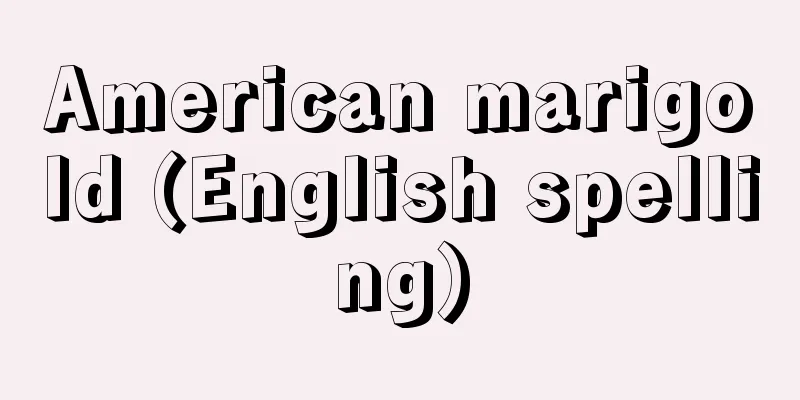Honganji Temple

|
The head temple of the Jodo Shinshu Honganji sect (commonly known as Nishi Honganji) and the head temple of the Shinshu Otani sect (commonly known as Higashi Honganji). [Koji Shimizu] historyIn 1262 (Kōchō 2), Shinran died at his brother Jin'yū's Zenpōbō temple. He was cremated at Ennin-ji Temple, located at the western foot of Mt. Higashiyama, and buried in Otani, Higashiyama. In 1272 (Bun'ei 9), by consensus of his disciples, Shinran's daughter Kakushinni reburied him north of Yoshimizu, on the private property of her second husband, Ononomiya Zennen, and built a hexagonal grass temple there to house a wooden carved statue. This became Otani Honbyō (currently located north of the Sanmon Gate of Chion-in Temple, in the backyard of Sutai-in Temple), and is the origin of Hongan-ji Temple. Later, in 1603 (Keichō 8), Otani Honbyō was moved to Gojōzaka in Higashiyama due to the expansion of Chion-in Temple. After Zennen's death, Kakushinni donated the land for the mausoleum to be shared by her disciples in 1277 (Kenji 3) and became its caretaker (rusushiki). The position of rusushiki was passed to her eldest son, Kakue, but a dispute arose between him and Kakue's half-brother, Yuizen. In 1309 (Enkei 2), Yuizen was defeated by a decision made by Shoren-in Temple, and the following year Kakue's eldest son, Kakunyo, became the third rusushiki. Yuizen destroyed the mausoleum and fled to Kanto, but it was restored in 1311 (Ocho 1). The following year (Showa 1), a plaque reading "Senshu-ji" was hung on the mausoleum, but it was removed due to opposition from Mount Hiei (the plaque was moved to Takada Senshu-ji Temple). The name Honganji was apparently used shortly thereafter, as it appears in a document from 1321 (Ganko 1), and in 1333 (Ganko 3, Shokei 2), Honganji and Kuonji were designated as places of prayer for Prince Moriyoshi (or Morinaga). In 1336 (Engen 1, Kenmu 3), the mausoleum was burned down by the military fire of Ashikaga Takauji, and in 1338, the old building was moved and rebuilt. At this point, the mausoleum changed from a hexagonal hall to a regular temple building, and formally became a temple (one theory is that the relocation was the time of destruction by Yuzen). In 1357 (Shohei 12, Enbun 2), during the time of the fourth head priest, Zennyo, it became a temple at the request of Emperor Gokogon, but it is said that Honganji was in a period of gradual development until the eighth head priest, Rennyo. In 1465 (Kansho 6), during the time of Rennyo, the prosperity of Honganji Temple incurred the wrath of Mount Hiei, and the buildings were destroyed, marking the end of Higashiyama Otani Honganji Temple. Rennyo built a small chapel at Minami Bessho Chikamatsu in Miidera, Omi Province (Shiga Prefecture), where he enshrined his portrait, but moved to the Hokuriku region due to the Onin War. He was active mainly in Yoshizaki, Echizen Province (Fukui Prefecture), but it was burned down by followers of Senshu-ji Temple, and he moved to Obama and Kawachi Deguchi, and in 1478 (Bunmei 10), he planned to rebuild Hongan-ji Temple in Yamashina, Kyoto. The temple site was donated by Jojo of Yamashina Saishu-ji Temple, and Shinsho-in was moved from Sakai, and the temple was completed five years later. In 1532 (Tenbun 1), Hosokawa Harumoto, fearing the power of Hongan-ji Temple, teamed up with Rokkaku Sadayori, coaxed Nichiren sect followers, and burned down the temple buildings. At that time, the 10th abbot Shonyo, who was in Osaka, established Osaka Gobo as the Honganji temple in 1533. This became Ishiyama Honganji. Shonyo's son Kennyo fought against Oda Nobunaga (the Ishiyama War), and in 1580 (Tensho 8) Kennyo retreated to Saginomori in Kishu (Wakayama Prefecture), but in 1591 (Tensho 19) he moved to Rokujo Horikawa in Kyoto with the assistance of Toyotomi Hideyoshi. However, when it came time for the 12th succession, Kennyo's eldest son Kyonyo was given a temple site in Karasuma, Kyoto by Tokugawa Ieyasu in 1602 (Keicho 7) and established a separate Honganji temple, which then split into Nishi Honganji and Higashi Honganji. [Koji Shimizu] Nishi Honganji TempleLocated in Horikawa-dori Hanaya-cho, Shimogyo-ku, Kyoto City. This temple is the head temple of the Jodo Shinshu Honganji sect. It is called Ryukoku-san. It was founded by Kakushinni in 1272. It is properly called Hongan-ji, and is commonly known as Nishi Hongan-ji and "Onishi" in contrast to Higashi Hongan-ji. In 1591, the 11th head priest, Kennyo, moved Hongan-ji to Rokujo Horikawa with the assistance of Toyotomi Hideyoshi, and the following year, the Amida Hall and other buildings were constructed. Kennyo died in the same year, and Hideyoshi encouraged his eldest son, Kyonyo, to succeed his father as the 12th head priest, but Kyonyo, who was at odds with his father during the Battle of Ishiyama, handed the position over to his younger brother, Junnyo, and retired. In 1602, Junnyo officially succeeded as the 12th head priest, and Nishi Hongan-ji was restarted. In 1617 (Genwa 3), a fire broke out in the bathhouse, destroying the Goei-do Hall, Amida-do Hall, and other buildings. In 1630, Hiunkaku (a national treasure) was relocated from Hideyoshi's Jurakudai, and Shoin, Karamon Gate (both national treasures), and Noh stage (a nationally important cultural property) were relocated from Fushimi Castle. In 1636 (Kan'ei 13), Goei-do Hall was rebuilt, and in 1760 (Horeki 10), Amida-do Hall was rebuilt, and the temple buildings were improved. On the other hand, a school dormitory was built in 1639 with a donation from a believer, and became the center of religious studies. This school dormitory was later called Gakurin, and the positions of academic head and nouke were established there. In 1797 (Kansei 9), the 6th Nohka, Koson, and the 7th Nohka, Chito, preached the idea of a different peace of mind, which led to confusion in the sect's teachings. As a result, the Nohka position was abolished and the Kangaku position was established in 1824 (Bunsei 7). During the Meiji period, the temple took the lead in academic research, and the 22nd head priest, Kyonyo (Otani Kozui), organized an expedition to the Western Regions from 1902 (Meiji 35) to 1914 (Taisho 3) to conduct on-site research. The sect also quickly established an education system, abolishing the school in 1875 and establishing a university, junior high school, and elementary school, and in 1900 establishing two schools below university level. Currently, the sect has nine universities (including junior colleges and junior and senior high schools). Nishi Honganji Temple rarely suffers from fires, and many of its temple treasures are designated as national treasures or important cultural properties. In addition, the temple treasures include the statue of Saint Shinran, the Thirty-six Poets' Anthology (both national treasures), the Boukie Kotoba (pictures of longing for a place), and the Fushimi Tenno Shinkan Gokashu (poems written in the hand of Emperor Fushimi) (both national important cultural properties). In 1994, Honganji Temple (Nishi Honganji Temple) was registered as a World Heritage Site (World Heritage Site. Kyoto's cultural assets include 17 shrines, temples, and castles, including Kiyomizu-dera Temple). [Koji Shimizu] Higashi Honganji TempleShimogyo-ku, Kyoto City, Karasuma-dori Shichijoaga. Head temple of the Otani sect of Shinshu. Properly called Hongan-ji. In contrast to Nishi Hongan-ji, it is commonly called Higashi Hongan-ji, Otani Hongan-ji, or "Otogi." Founded by Kyonyo. Founded in 1272. Kennyo's eldest son, Kyonyo, built the Daishi-do (formerly called Soshi-do, or Mikaedo of the Hongan-ji sect) and other temple buildings on the current site given to him by Tokugawa Ieyasu in 1602. The Daishi-do was completed in 1604, and a wooden statue of Shinran, said to have been carved by Shinran himself, was enshrined here from Myoan-ji Temple in Umayabashi, Joshu. Kyonyo died in 1614 and was succeeded by Sennyo, but he spent the rest of his life behind the scenes. The current site was donated in the "Letter of Donation for the Honganji Temple Site" of 1619, so Higashi Honganji was officially recognized by the shogunate during Sennyo's reign. In 1639, Ieyasu donated the land of Shosei-en (Kikoku residence). The Daishi Hall was rebuilt between 1652 (Shoo 1) and 1658 (Manji 1), and in 1665 the lecture hall of Kyushu Kanzeon-ji Temple was moved to Shosei-en and used as a dormitory. In 1667, the 15th abbot, Jonyo, rebuilt the main hall, but the buildings were subsequently destroyed by fires during the Tenmei (1781-89), Bunsei (1818-30), and Ansei (1854-60) eras, and the current main hall and Daishi Hall were rebuilt in 1895 (Meiji 28). Other buildings such as the Imperial Envoy Gate, Imperial Palace, and Shoin study also date from the Meiji period. Like Nishi Honganji, the temple strived to promote the teachings of the sect, establishing lecturer positions at the school (1715), and during the Meiji period, it played a pioneering role in Buddhist studies by focusing on translating Sanskrit documents. In 1875 (Meiji 8), it established large, middle, and small schools to educate the children of its followers. These were the forerunners of the sect-run schools such as present-day Otani University. Temple treasures include Shinran's handwritten Kyogyoshinsho (National Treasure), a portrait of Saint Shinran (Anjo Mikage), and a picture of the lives of the Honganji Saints (both designated as Important National Cultural Properties). [Koji Shimizu] "Honganji" by Eio Inoue (1981, Shibundo)" ▽ "Honganji" by Takashi Hamada (1975, Chuokoron-Bijutsu Shuppan)" ▽ "East and West Honganji" by Enjun Miyazaki (1962, Kyoiku Shinchosha) [References] | | | | |"Illustrated Guide to Famous Places in the Capital" Volume 2, compiled by Akisato Rito, published in 1786 (Tenmei 6), held at the National Diet Library "> Map of the grounds of Nishi Honganji Temple "Illustrated Guide to Famous Places in the Capital" Volume 2, by Akisato Rito, published in 1786 (Tenmei 6), held at the National Diet Library "> Map of the grounds of Higashi Honganji Temple Source: Shogakukan Encyclopedia Nipponica About Encyclopedia Nipponica Information | Legend |
|
浄土真宗本願寺派(通称西本願寺)本山、真宗大谷(おおたに)派(通称東本願寺)本山。 [清水 乞] 歴史1262年(弘長2)親鸞(しんらん)は弟尋有(じんゆう)の善法坊にて死去、東山の西麓(せいろく)にあった延仁寺において荼毘(だび)に付され、東山大谷の地に葬られた。1272年(文永9)門弟の総意によって親鸞の娘覚信尼(かくしんに)が、再嫁した小野宮(おののみや)禅念の私有地吉水の北に改葬し、ここに六角形の草堂を建てて木彫の影像を安置した。これが大谷本廟(ほんびょう)(現在の知恩院山門の北、崇泰院の裏庭あたり)で、本願寺の起源である。のちに大谷本廟は1603年(慶長8)知恩院拡張のため東山五條(ごじょう)坂に移される。覚信尼は禅念の死後、1277年(建治3)廟堂の土地を寄進し門弟の共有とし、その管理役(留守職(るすしき))となった。留守職は長子覚恵(かくえ)に譲られたが、覚恵の異父弟唯善(ゆいぜん)と争いを生じる。1309年(延慶2)青蓮院(しょうれんいん)の決裁によって唯善は敗れ、翌年覚恵の長子覚如(かくにょ)が第3代留守職となる。唯善は廟堂を破壊して関東に逃れたが、廟堂は1311年(応長1)復興された。翌12年(正和1)廟堂に「専修寺」の額を掲げるが、叡山(えいざん)の反対により撤去される(この額は高田専修寺に移る)。 本願寺の名称は、その後まもなく用いられたようで、1321年(元亨1)の文書にその名がみえ、1333年(元弘3・正慶2)には本願寺と久遠寺(くおんじ)が護良(もりよし、あるいは、もりなが)親王の祈願所とされている。1336年(延元1・建武3)廟堂は足利尊氏(あしかがたかうじ)の兵火により焼失、38年、古い堂舎を移築する。ここに廟堂は六角堂から一般の寺院建築となり、形式上も寺院となる(一説に移築を唯善による破壊のときとする)。1357年(正平12・延文2)第4世門主善如(ぜんにょ)のとき、後光厳(ごこうごん)天皇の勅願寺となるが、第8世門主蓮如(れんにょ)までの本願寺は漸興期にあったといわれる。 1465年(寛正6)蓮如の時代、本願寺の活況は叡山の反感を買い、堂舎が破壊され、ここに東山大谷の本願寺は終わる。 蓮如は近江(おうみ)国(滋賀県)三井寺(みいでら)の南別所近松に小堂を建てて御真影を安置したが、応仁(おうにん)の乱により北陸に移る。越前(えちぜん)国(福井県)吉崎(よしざき)を中心に活躍したが専修寺門徒により焼かれ、小浜(おばま)―河内(かわち)出口と転じ、1478年(文明10)京都山科(やましな)に本願寺の再興を企てる。寺地は山科西宗寺の浄乗(じょうじょう)が寄進し、堺(さかい)より信証院を移築し、5年後に完成した。1532年(天文1)本願寺の勢力を危惧(きぐ)した細川晴元(はるもと)は六角定頼(さだより)と組み、日蓮宗徒を抱き込み、堂宇を焼く。このとき、大坂にいた第10世証如(しょうにょ)は1533年大坂御坊を本願寺とする。これが石山本願寺である。証如の子顕如は織田信長と戦い(石山合戦)、1580年(天正8)顕如は紀州(和歌山県)鷺ノ森(さぎのもり)に退いたが、1591年(天正19)豊臣(とよとみ)秀吉の援助により京都六条堀川に移る。しかし第12代相続にあたり1602年(慶長7)顕如の長男教如は徳川家康より京都烏丸(からすま)に寺地を与えられて本願寺を別立し、ここに西本願寺と東本願寺に分裂した。 [清水 乞] 西本願寺京都市下京(しもぎょう)区堀川通花屋町下ル。浄土真宗本願寺派本山。龍谷(りゅうこく)山と号する。覚信尼の開基。1272年開創。正しくは本願寺と称し、東本願寺に対して西本願寺、「お西」と通称する。第11世門主顕如は豊臣秀吉の援助によって1591年六条堀川に本願寺を移築し、翌年には阿弥陀(あみだ)堂をはじめ諸堂が建造される。この年顕如が没し、秀吉は長男の教如に第12世門主を継ぐことを勧めたが、石山合戦のとき、父と対立した教如は弟の准如(じゅんにょ)にその職を譲り隠居する。1602年准如が正式に第12世門主を継ぎ、西本願寺は再出発する。1617年(元和3)浴室から出火、御影堂、阿弥陀堂など諸堂宇を焼失。1630年より秀吉の聚楽第(じゅらくだい)から飛雲閣(国宝)が移築され、伏見(ふしみ)城から書院、唐門(からもん)(ともに国宝)、能舞台(国重要文化財)が移転されたという。また1636年(寛永13)には御影堂が再建、1760年(宝暦10)には阿弥陀堂が再建され、伽藍(がらん)は整備された。他方、1639年一信徒の寄進によって学寮がつくられ宗学の中心となる。この学寮はのちに学林とよばれ、学頭職、能化(のうけ)職が置かれた。1797年(寛政9)第6代能化の功存(こうそん)、第7代能化の智洞(ちとう)らが異安心(いあんじん)を唱え、宗学が混乱したため能化職は廃止され、1824年(文政7)勧学職を置くことになった。 明治時代には率先して学術研究に力を注ぎ、第22世鏡如(きょうにょ)(大谷光瑞(こうずい))は1902年(明治35)より1914年(大正3)にかけて西域(せいいき)探検隊を組織して現地調査を行った。また宗内の教育体制の確立も早く、1875年学林を廃止して、大・中・小教校を設置、1900年には大学以下2種の学校を置いた。現在宗立の学校は大学9校(短大、中・高校併設を含む)に及ぶ。西本願寺は火災にあうことが少なく、国宝、国重要文化財指定のものが多い。また寺宝として親鸞聖人像、『三十六人家集』(以上、国宝)、『慕帰絵詞(ぼきえことば)』『伏見(ふしみ)天皇宸翰(しんかん)御歌集』(以上、国重文)など名宝が多い。1994年(平成6)、本願寺(西本願寺)は世界遺産の文化遺産として登録された(世界文化遺産。京都の文化財は清水寺など17社寺・城が一括登録されている)。 [清水 乞] 東本願寺京都市下京区烏丸通七条上ル。真宗大谷派本山。正しくは本願寺という。西本願寺に対して東本願寺、あるいは大谷本願寺、「お東」と通称する。教如の開基。1272年開創。顕如の長男教如は1602年徳川家康より与えられた現在の地に大師堂(古くは祖師堂という。本願寺派の御影堂)をはじめ伽藍を建立。大師堂の完成は1604年で、ここに上州厩橋(うまやばし)妙安寺より親鸞自刻と伝えられる木彫親鸞像が安置された。教如は1614年死亡し、宣如が後を継ぐが、生涯を裏方として終わった。1619年の「本願寺内敷地御寄附状」に現在地寄付のことが記されているので、宣如の代に東本願寺に幕府から公認されたことになる。1639年家康は渉成園(しょうせいえん)(枳殻(きこく)邸)の土地を寄進。1652年(承応1)より58年(万治1)にかけて大師堂の改築、65年九州観世音寺(かんぜおんじ)の講堂を渉成園に移し学寮とした。67年第15世常如は本堂の改築を行っているが、その後、天明(てんめい)(1781~89)、文政(ぶんせい)(1818~30)、安政(あんせい)(1854~60)とたび重なる火災により堂宇を焼失し、現在の本堂と大師堂は1895年(明治28)の再建。そのほか勅使門、宮御殿、書院などの建築物も明治時代のものである。西本願寺と同様、宗学の顕揚に努め、学寮に講師職を置き(1715)、明治時代には梵(ぼん)文書の翻訳などに力を注ぎ、仏教学研究に先駆的役割を果たした。1875年(明治8)大・中・小教校を設けて宗門子弟の教育を行った。これが現在の大谷大学など宗立学校の前身である。寺宝に親鸞自筆『教行信証(きょうぎょうしんしょう)』(国宝)、親鸞聖人画像(安城御影)、本願寺聖人伝絵(ともに国重文)などがある。 [清水 乞] 『井上鋭夫著『本願寺』(1981・至文堂)』▽『浜田隆著『本願寺』(1975・中央公論美術出版)』▽『宮崎円遵著『東西本願寺』(1962・教育新潮社)』 [参照項目] | | | | |『都名所図会』 巻2 秋里籬島編 1786年(天明6)刊国立国会図書館所蔵"> 西本願寺境内図 『都名所図会』 巻2 秋里籬島著 1786年(天明6)刊国立国会図書館所蔵"> 東本願寺境内図 出典 小学館 日本大百科全書(ニッポニカ)日本大百科全書(ニッポニカ)について 情報 | 凡例 |
>>: Ponkan - Ponkan (English spelling)
Recommend
U Thong (English spelling)
An ancient ruin in central-western Thailand. Locat...
Cholagogues - ritanyaku (English spelling)
Choleretic agents are drugs that promote the secr...
The Law of Establishment - The Law of Establishment
An ancient Japanese legal code. It is also read as...
atamasco lily (English spelling) atamascolily
...The genus name comes from the Greek words zeph...
cuproscheelite
…Tungstate minerals are divided into the scheelit...
Image sensor - image sensor
Image sensor. A general term for devices (semicond...
Aogarebushi - Aogarebushi
…Then, after drying in the sun, the mold on the s...
Owarawa - Big boy
Hair that has been untied. The name comes from th...
Uraku Window - Urakumado
...A triangular floor board (urokoita) is laid be...
March Incident
This was an attempted coup d'état planned wit...
Car Zenshichi
A head of non-human samurai in the late Edo period...
Steele, Sir Richard
Born: March 12, 1672. Baptized: Dublin Died: Septe...
Langlois, H. (English spelling) LangloisH
…It should not be forgotten that there was a pion...
Dike swarm
…(3) Ring dike: A ring dike is a magma intrusion ...
Councillor - Gishin
〘 noun 〙 One of the six rikugi (decrees) in the ri...









